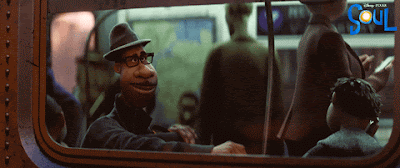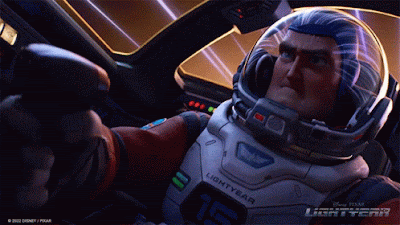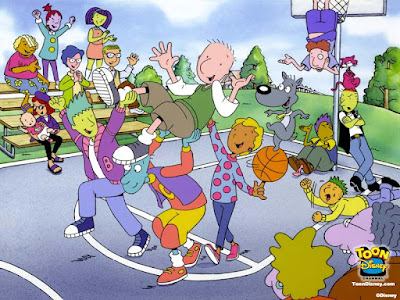WRITER'S NOTE: The following Raiders review was originally posted on May 3, 2020. The Crystal Skull excerpt was originally posted on November 10, 2020. The others were written exclusively for this post.
 |
| Courtesy Paramount 1981 |
Raiders of the Lost Ark (1981)
When one looks back at the most popular films of the last quarter of the 20th century, the growing trend of box-office hits from that period onward is arguably thanks to two men: Steven Spielberg and George Lucas.
Having both studied film in the 1960s before making it big with such revered blockbusters as Jaws and Star Wars, it was only a matter of time before they both collaborated on a film. They were reportedly on vacation simultaneously in the late-1970s, as Lucas's "space opera" exceeded even his wildest expectations, while Spielberg experienced his first financial disaster (1979's war comedy 1941). The latter had always wanted to make a James Bond film, but Lucas had a better suggestion: a story about an archeologist who searches the globe for artifacts long lost for thousands of years. The character was named Indiana Jones (after Lucas's own dog, no joke), the artifact was the Ark of the Covenant (as described in the Book of Genesis), and, as Star Wars was an homage to sci-fi matinee serials of the 1940s, Raiders of the Lost Ark (released in 1981) would echo the adventure serials of that same period, but with more sophistication.
Considered one of the best Hollywood scripts ever produced (courtesy Lawrence Kasdan, Lucas, and Philip Kaufman), Raiders has easily identifiable villains (common in serials), dangerous and unpredictable situations, some intense pre-PG-13-level violence, and one of the most unforgettable opening sequences of any film (Jones running from a giant boulder never ceases to excite). The same goes for the film's many iconic lines ("Why'd it have to be snakes?"), stunts (i.e., dangling under a speeding truck), and scary special effects (melting faces, anybody?)
And the best part? Harrison Ford is at his charismatic best as the daring explorer, who never seems to catch a break but always carries such swag. And we love him for it. Meanwhile, Karen Allen's Marion Ravenwood is far from a damsel in distress--to be fair, she does mildly fit the bill, but only just--and can clearly stand up for herself. Now there's a strong and sassy heroine, if ever there was one. If anything, Raiders is proof that you can make a great film for popcorn thrills, especially if there's genuine quality and investment along for the ride. It remains one of the best in cinema history.
 |
| Courtesy Paramount 1984 |
There are very few times throughout cinema where certain movies have significantly changed the industry, for better or worse. In terms of marketing and age-appropriateness, that trend arguably started in 1984, when two movies (produced by Spielberg) were released during the summer and were each met with both box-office success and controversy. One of them was a second installment in the Indiana Jones series.
Most people may not realize that Indiana Jones and the Temple of Doom is actually a prequel to Raiders, set one year before Dr. Jones' trek to Delih in that first film. In Doom, he gets caught up in an adventure in India with a wimpy nightclub singer (Kate Capshaw) and an orphaned street kid (Ke Huy Quan, in his screen debut) to find and retrieve a collection of sacred stones and kidnapped children from an evil voodoo cult.
If anything, this second film (along with Gremlins) is responsible for the creation of the PG-13 rating, after several parents and critics argued about the dark subject matter and high levels of violence. Chief among these elements is the infamous scene where one character gets his heart ripped out of his chest. Add to that some ritualistic sacrifices, blood offerings, child enslavement, brief sexual banter, some gross-out moments involving an unlikely dinner and a tunnel of insects, and some outdated stereotypes and cultural insensitivities. Even Speilberg and Lucas admitted years later that they went too far--hence, why they made a third Indy film five years later. (More on that in a bit.)
Temple of Doom does have its moments, including a break-necking mine car chase sequence, and a jaw-dropping bridge faceoff. It remains a distinct franchise entry for sure. Indy and Short Round even reunited nearly thirty years later, when Ford presented the Best Picture Academy Award to the A24-produced multiverse genre-bender Everything Everywhere All At Once, in which Quan gave a Best Supporting Actor-winning comeback performance after being away from the screen for decades.
 |
| Courtesy Paramount 1989 |
According to IMDb, there were two reasons that George Lucas and Steven Spielberg made a third Indiana Jones film: to fulfill an obligation they made for three movies, and to make up for the criticisms they received regarding Temple of Doom. In a back-to-basics approach, Lucas and Spielberg set the third film as a quest for the Holy Grail, but more specifically as a reunion between Indy and his estranged father, Professor Henry Jones Sr. (played by the original James Bond, Sean Connery).
Indiana Jones and the Last Crusade still ranks as the second best in the series (after Raiders). It's always a treat watching the chemistry between Ford and Connery, as well as John Rhys-Davies' return as Sala. It also helps that an immersive prologue of Indy's backstory when he was younger (played by the late River Phoenix), when he was a boy scout, when he first cracked a whip, and how he got the scar on his chin. (This segment may have inspired the television spinoff series, The Young Indiana Jones Chronicles, in the early-1990s.)
What also makes this a worthy third entry, despite its dialogue-driven "X marks the spot" treasure hunt, is how faith and redemption play a significant role, both spiritually and emotionally. If Raiders had a love story between Indy and Marion Ravenwood, and Temple of Doom represented a dark escapist trek, then The Last Crusade took on a more familial and mature arc, with both Jones's reconnecting and re-understanding each other.
But that doesn't mean the film is devoid of thrills. Plenty of exciting action and globetrotting still abounds, with one cringe-worthy sequence involving rats, and another featuring one of the scariest visual effects ever put to film. Overall, as we've seen up to this point, there are film trilogies that start out spectacularly, but then lose some of their luster (or most of it) when they get to a second chapter. And then, a third installment arrives and redeems the series. This is exactly how the Indiana Jones series came full circle--and off into the sunset--by the end of the decade.
 |
| Courtesy Paramount 2008 |
In the early-2000s, George Lucas had completed his Star Wars prequel trilogy, with 2002's Episode II: Attack of the Clones and 2005's Episode III: Revenge of the Sith. Lucas retired from directing after that (quite a strong way to cap a directing career, if you ask me), but continued to produced and act as a consultant on various Lucasfilm and ILM productions, including a fourth Indiana Jones adventure.
With Indiana Jones and the Kingdom of the Crystal Skull, Harrison Ford returned as the famed archaeologist on a mission (this time in the late-1950s, during Cold War paranoia) to return an ancient artifact to a lost city of gold, and encountering space aliens along the way (hmm). Karen Allen's return as Marion Ravenwood (fan service in retrospect), Cate Blanchett as a hammy Russian baddy, John Hurt as a schizophrenic professor, and Shia LaBeouf as a young street kid, were welcome additions. It was also a return to the blockbuster subgenre for Spielberg, who had been spending most of the decade experimenting with darker, more mature, feature films, specifically in science-fiction (2001's A.I.: Artificial Intelligence, 2002's Minority Report, 2005's War of the Worlds), as well as historical drama (the 2001 miniseries Band of Brothers, 2005's Munich).
While it received generally good reviews, had some exciting action sequences (that motorcycle chase was impressive), and was one of the top-grossing films of the year, Crystal Skull is regarded by many fans as a weak entry, what with its overreliance on CGI and silly, unbelievable action. (Surviving a nuclear explosion in a refrigerator? Yeah, right.) And with it's mesh of sci-fi into adventure, it suffers the same way the Star Wars prequels did. This would mark the last time that Spielberg directed an Indiana Jones film.
I will say this: two consistent things that have made this series entertaining (good installments and not-so-good) are Ford's committed performance (the actor has stated that this is his favorite screen character) and the iconic music of John Williams. The latter will reportedly be presenting his final film composition for the fifth and final installment, Indiana Jones and the Dial of Destiny.
 |
| Courtesy Disney 2023 |















.gif)













